High voltage power transmission in 2025 uses cutting-edge technologies to deliver electricity efficiently over long distances. You benefit from its ability to reduce energy loss and support renewable energy sources. This system ensures reliable power for growing global needs while prioritizing sustainability. It plays a crucial role in modern energy infrastructure.
Understanding High Voltage Power Transmission
How Voltage and Current Affect Energy Loss
Electricity transmission over long distances faces one major challenge: energy loss. This loss occurs as heat when current flows through transmission lines. You can reduce this loss by increasing the voltage and lowering the current. High voltage power transmission works on this principle. When voltage increases, current decreases for the same amount of power. Lower current means less resistance in the wires, which reduces heat and energy waste.
Key Components: Transformers, Lines, and Substations
High voltage power transmission relies on three main components: transformers, transmission lines, and substations. Transformers play a critical role by stepping up the voltage for transmission and stepping it down for local distribution. Transmission lines, often made of aluminum or copper, carry electricity over long distances. Substations act as control points, managing voltage levels and directing electricity to where it’s needed. Together, these components form the backbone of the power grid.
Why High Voltage is Essential for Long-Distance Transmission
High voltage power transmission is essential for moving electricity across vast distances. Without high voltage, energy loss would make long-distance transmission inefficient and costly. High voltage allows you to transport electricity from remote renewable energy sources, like wind farms and solar plants, to urban centers.
High Voltage Power Transmission in 2025
Integration of Renewable Energy into the Grid
In 2025, renewable energy plays a central role in powering your world. High Voltage Power Transmission enables the seamless integration of energy from sources like wind, solar, and hydropower into the grid. These sources are often located far from cities and industries. High voltage systems transport this clean energy efficiently over long distances. For example, offshore wind farms generate electricity miles away from the coast. High voltage lines bring that power to your home without significant energy loss. This integration reduces dependence on fossil fuels and supports a greener future.
Smart Grids and Digital Monitoring Systems
Smart grids revolutionize how you interact with electricity. These grids use digital monitoring systems to track energy flow in real time. Sensors and automated controls detect issues instantly, ensuring reliable power delivery. You benefit from fewer outages and faster repairs. Smart grids also optimize energy use by balancing supply and demand. For instance, during peak hours, they prioritize renewable energy sources. This technology makes High Voltage Power Transmission more efficient and adaptable to your needs.
Advances in High Voltage Direct Current (HVDC) Technology
HVDC technology has transformed electricity transmission in 2025. It allows you to transmit power over longer distances with minimal energy loss. Unlike traditional alternating current (AC) systems, HVDC uses direct current, which is more efficient for long-distance transmission. Modern HVDC systems also integrate renewable energy better. For example, they connect solar farms in deserts to urban centers. These systems are compact, reducing the environmental impact of transmission lines.
Safety and Environmental Impacts
Safety Protocols in High Voltage Systems
High voltage systems require strict safety measures to protect you and the environment. Workers follow detailed protocols when maintaining or repairing equipment. These include wearing insulated gloves, using specialized tools, and keeping a safe distance from live wires. Advanced monitoring systems detect faults instantly, reducing the risk of accidents. You also benefit from automated shutdown mechanisms that prevent overloads or short circuits. Warning signs and barriers around substations and transmission lines ensure public safety.
Reducing Environmental Footprint of Transmission Lines
Transmission lines can impact the environment, but modern designs minimize this effect. Engineers now use compact towers that require less land. They also route lines to avoid sensitive ecosystems like wetlands and forests. In some cases, underground cables replace overhead lines to preserve natural landscapes. You’ll notice that newer materials, such as advanced composites, reduce the need for frequent maintenance. This approach lowers emissions from repair activities.
Addressing Health Concerns from Electromagnetic Fields
Electromagnetic fields (EMFs) from high voltage lines often raise health concerns. However, studies show that EMF levels near transmission lines fall within safe limits. Engineers design systems to keep EMFs as low as possible. For example, they increase the height of towers and use shielding materials. You can feel reassured knowing that regulatory agencies monitor EMF exposure closely. Staying informed about these measures helps you understand the safety of modern power grids.
High Voltage Power Transmission ensures efficient electricity delivery in modern energy systems. In 2025, advanced technologies and renewable energy integration make it more reliable and eco-friendly. You benefit from its ability to meet growing energy demands. As energy systems evolve, this technology remains a key part of global infrastructure.




